Of Dayton, 100 years and counting
This year marks the 100th anniversary of the University of Dayton, which may seem strange for an institution founded 170 years ago. Early in its inception, from 1850 to 1920, the school was known by many names: St. Mary’s School for Boys, St. Mary’s Institute, St. Mary’s College and St. Mary College. The exact reasons the school chose to take on the name of its city may never be known. But it is a fact that final name change, initiated in 1920, fortified the path of civic engagement that is now UD’s hallmark.
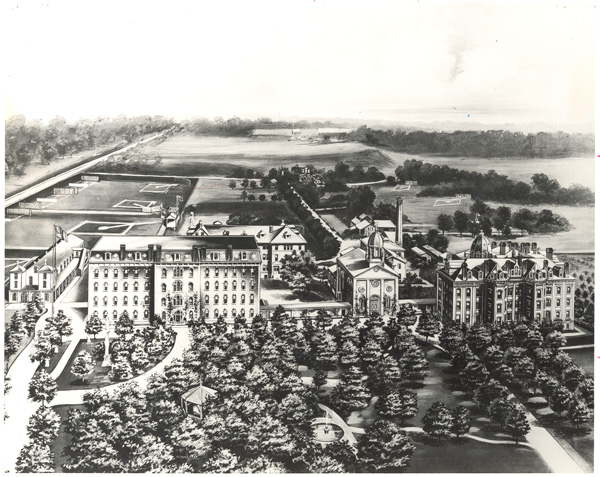
That the University’s founders, the Catholic brothers from the Society of Mary, came to Dayton at all is an accident of history. In 1849, Bishop John Baptist Purcell of Cincinnati asked for help from the Marianists in France. Religious brothers, led by Father Leo Meyer, S.M., sailed by steamer and arrived in New York 49 days after leaving Ebersmunster, France. They traveled the Hudson River and Great Lakes by steamboat and crossed Ohio by train from Sandusky on the shores of Lake Erie.
When they arrived in Cincinnati, the city was in the middle of a cholera epidemic.
Meyer had longed to come to the United States to establish a community of Marianists. His personality and perseverance were those of a pioneer. But the bishop assigned him and the brothers to teach catechism to grade-school children and 100 German-speaking orphaned boys. Cincinnati was predominantly German Catholic.
This was not part of Meyer’s long-term plan.
The restless Meyer was always in search of the right property to establish a Marianist motherhouse. When the bishop dispatched the brothers and priest to Emmanuel Catholic Church to help manage the cholera crisis in Dayton, Meyer, at last, had his opportunity to establish an American base for the Society of Mary. Meyer took with him brothers he thought were up to the task of starting and sustaining a community. They were at once teachers and working brothers.
A start at Nazareth
While still in Cincinnati, Meyer had made the acquaintance of John Stuart of Dayton. Stuart was owner of 125 acres of fields, woods, vineyards, orchards, farm buildings and a home on the city’s southern border.
The farm fit Meyer’s needs perfectly.
After the death of Stuart’s infant daughter, Mary Louisa, to cholera in 1848, Stuart decided to return to France. He sold his Dewberry Farm to Meyer on March 19, 1850. The sale price was $12,000, to be paid in three installments over nine or 12 years with yearly interest of 6%. Lacking collateral, Meyer offered Stuart a medal of St. Joseph, whose feast day they were celebrating.
The Society of Mary, then just 33 years old, believed that education was key to its mission of promoting Catholicism, and it established on July 1, 1850, St. Mary’s School for Boys on the farm renamed Nazareth. The Dayton Marianist community included a priest, a teacher, a cook and a gardener. Their days began with prayer and meditation at 4 a.m. They were a microcosm of the Society of Mary and lived as a community of equals according to the Society’s Rule of Life.
For the next 70 years, UD was a combination working farm, grade school, preparatory school, novitiate and eventually a college. The academic offerings were practical and designed to be useful to first- and second-generation American boys and the Dayton community. Among disciplines taught were science, pre-med, teacher preparation, commerce and finance, classical studies, and engineering, including electrical, mechanical, chemical and civil.
A university for Dayton
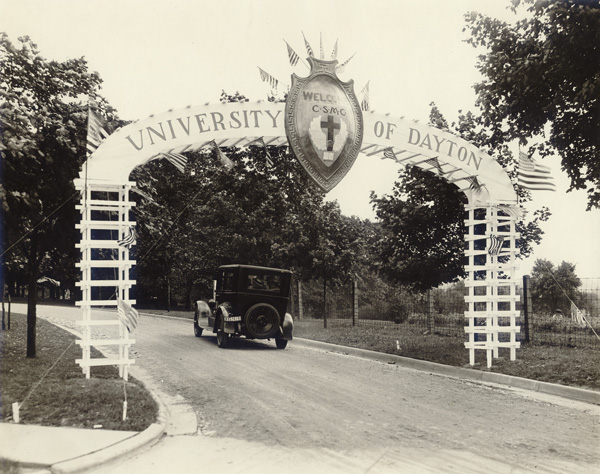
As what Daytonians called the “school on the hill” prepared for the start of its preparatory and college classes in 1920, the school’s board of trustees decided that, with college-level courses in engineering being added and evening classes being planned for the local community, it was time to be incorporated as a university. Also, it was rumored that another school might want the “Dayton” name that the board sought. This added some urgency.
The six-member all-Marianist board of St. Mary College applied for the new name and incorporation as a university on July 7, 1920. On Sept. 2, it was granted. SMC, as it had been known, became UD.
Father Bernard P. O’Reilly, S.M., former and future school president, provincial superior and board chair of St. Mary College, drove to Columbus, Ohio, and secured the new name and incorporation documents from the Ohio secretary of state for a fee of $5. On Sept. 4, a small headline on Page 1 of the Dayton Daily News revealed simply, “University of Dayton now name of St. Mary College: Buildings to be erected.”
There are limited records of the action of the board of trustees. Nothing about their deliberations on the name change survived. Were there arguments over adopting a secular-sounding name? Impassioned speeches about the role of the college in the community? Concerns about the future of the school? Fears about the safety of their students? Such questions are lost to time. But there are many plausible explanations. While none can be proven, many are supported by the changes happening in Dayton and the world around 1920.
New times
It is possible that O’Reilly and the others sought to leverage local recognition for their school as an emerging academic center that could contribute new ideas. Marianist co-founder Blessed Father William Joseph Chaminade’s maxim — “New times call for new methods” — had been part of the brothers’ Marianist formation. Dayton was experiencing economic growth prompted by establishment of National Cash Register, the invention of powered flight and the success of the Dayton Electric Co., known as DELCO.
Sister Gabrielle Bibeau, F.M.I. ’11, notes that a new generation of upwardly mobile Catholics was trying to become more incorporated into American society after being separated for so many decades into their own ethnic and religious enclaves.
“Catholic communities and institutions cannot be closed off from the well-being of their neighbors, whether these neighbors are Catholic or not.”
“Being known as the University of Dayton sends a profound message that Catholic communities and institutions cannot be closed off from the well-being of their neighbors, whether these neighbors are Catholic or not,” said Bibeau, research and program assistant at the North American Center for Marianist Studies.
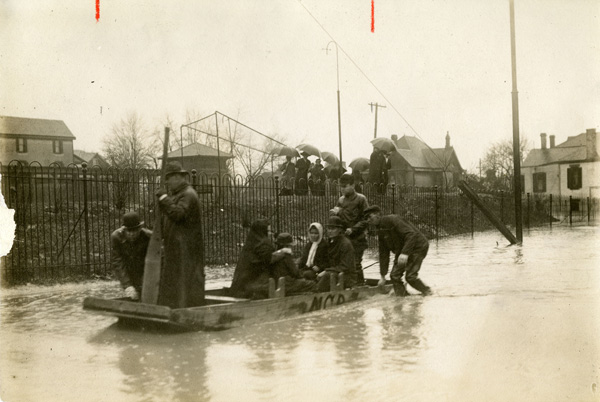
The city of Dayton was also emerging from the Great Flood of 1913 and World War I as a potential economic powerhouse. The Miami Conservancy District and its five dams were brand new and evidence of the community’s resilience. The University was preparing young men who could advance Dayton. The name change, Bibeau said, signaled to the world the deep connection between itself as an institute of higher education and the community in which it is located.
Civic asset
Another possibility is that the brothers wanted their own students and staff, many of whom were first-generation Americans, to see themselves and their university as a public good, a civic asset.
“It was pointed out (by the school),” according to the Dayton Daily News, that the name was “in honor of the city, and that by drawing a large number of outside students here, the college has for a number of years been of benefit to the city in a commercial as well as civic way.”
There were 746 students and about 50 staff in 1920, and the campus was eight buildings with five planned additions. One half of the students were from outside Dayton, mostly Ohio, but Mexico, Costa Rica and Puerto Rico were also represented.
The name change was about being part of Dayton, but it was also about something bigger.
“It tied the future of the University of Dayton to the common good of the greater Dayton community,” said Brother Raymond L. Fitz, S.M. ’64, president emeritus. “It positioned the faculty, staff and students to collaborate with others in addressing the complex issues shaping our community.”
Self-protection
UD history professor William Trollinger offered another possible motive in an American Catholic Studies article of spring 2013. Recognizing that anti-Catholicism was on the rise in Dayton as well as throughout the nation in the early 1900s, Trollinger suggests that the naming of the University may have been intended to hide the school’s Catholic identity.
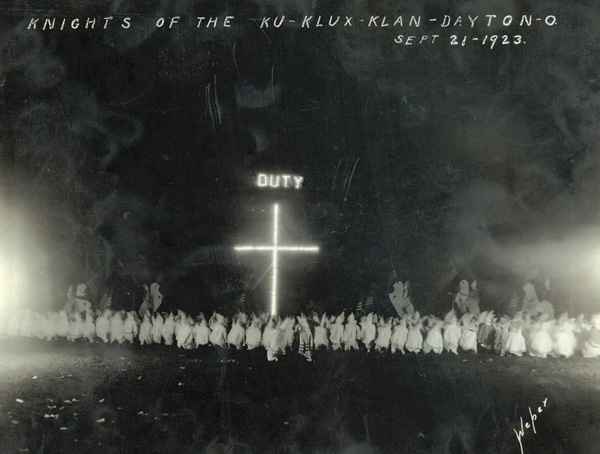
When St. Mary’s President Father Joseph Tetzlaff, S.M., announced the name change in 1920, he wrote, “We entertain the fondest hopes that the citizens of this progressive community will make permanent this sympathetic attitude by providing their further moral and material support.”
According to Trollinger, “Perhaps the most that can be said for Father Tetzlaff’s ambiguous explanation is that it was aspirational, in that he and the board members hoped that ‘this progressive community’ would come to feel pride in its primary institution of higher education.”
But in the next few years, Trollinger notes, “a significant percentage of native-born Daytonians joined or supported the local Ku Klux Klan chapter.” The local chapter was virulently anti-Catholic, Trollinger said, and “had as one of its primary and ongoing activities a harassment campaign directed against Dayton’s ‘principal school.’”
Builders of the future
It is also possible the Dayton Marianists were making a statement about the role their school and their students could play as builders of the future Dayton and America. As local newspapers reported through the years, the brothers and their graduates were known for a respect for learning and then using those skills to build and sustain communities. This was certainly true of O’Reilly, the University’s board chair and provincial superior in 1920.
O’Reilly is described as “an extrovert and an activist given to direct promotion of the college among businessmen” by historian Christopher Kauffman. O’Reilly was not a traditionalist but “an upwardly mobile Irish-American leader” whose vision for the school and the Marianists was very different from the German-speaking Alsatian superiors who preceded him. According to Kauffman, “O’Reilly had a significant influence on the American character of the center of Marianist higher education in Dayton.”
If O’Reilly wanted to break out of old-world traditions and embrace the modern, there were few better ways to do it than naming the new university for Dayton.
It’s a sentiment shared by the University’s current board chair, Mary Boosalis, president and CEO of Premier Health.
“The University has become known for its call to learn, lead and serve that today radiates across the globe.”
“By establishing the University of Dayton name, Father O’Reilly gave us a visible sense of place and community at a time in history when our region was becoming known for innovation and groundbreaking advancements, putting Dayton on the map,” Boosalis said. “Similarly, and never wavering from our Catholic, Marianist principles, the University has become known for its call to learn, lead and serve that today radiates across the globe.”
Ordinary folks
The simplest explanation is offered by Brother Tom Giardino, S.M. ’65, a longtime student of Marianist history. He surmises that, like their founder, the Dayton Marianists wanted to be approachable to “ordinary folks.” Father Chaminade wanted the Marianists to be as much “of” their local communities as possible.
“When the Marianists began in France, they did not have a religious garb, and they used the term ‘monsieur’ [mister] rather than ‘brother’ or ‘father,’” said Giardino, executive director of the Association of Marianist Universities.
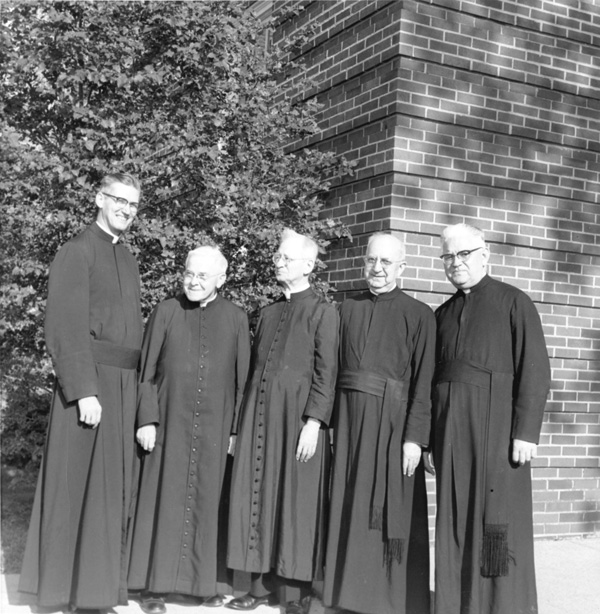
The challenge to Marianists to be part of their locales was well expressed by Chaminade’s confidant, Father Jean-Baptiste Lalanne, S.M.
“Though we are not men of the world,” said Lalanne in 1852, “we are not for all of that, men of another age or another country. Our lives are not hidden, they are not relegated to the deserts, or passed within the narrow limits of a cell. To act on the world we are persuaded that we must know it, and hence our life is mingled with all the movements that influence the trend of the epoch, and call for a new order of requirements.”
Heart and soul
The Dayton Marianists of 1920 wanted to be players and “act on the world.” It is difficult to imagine that they foresaw just how broadly and deeply connected UD would become to the economic and cultural evolution of the city and region during the next 100 years.
It was a risk, and even today some would say that something was lost in the name change. Bob Daley ’55, writer and commentator on public policy, notes that the public no longer immediately recognizes the school’s Catholic identity from its name.
“UD is not alone in this case,” he said. “The universities of Georgetown, Santa Clara, St. Louis, Detroit, Providence, San Diego, San Francisco and Seattle, as well as Boston College, are among the other major Catholic universities named for their locales,” he said.
The choice by the Marianists of a “public” name for their private, Catholic university has proven to be fortuitous and motivating.
But the choice by the Marianists of a “public” name for their private, Catholic university has also proven to be fortuitous and motivating. At the time, and likely through the last century, the name change has been embraced as both an identifier and a motivator of the community building for which the University is known.
The name itself challenges most who become part of the UD community to see themselves as citizens, stakeholders and builders of a community called Dayton — and then to take what they’ve learned in Dayton to other cities they will similarly embrace as their own. Regardless of their motivations, Marianists put a very big stake in the ground in 1920 by naming their university “of Dayton.”
As the 100th anniversary of the name change approaches, the list of recent opportunities to bind together city and university continues to grow: partnerships to address homelessness and opioid addiction; accomplishments in research and economic development; responses to tornadoes, a shooting and a pandemic; and celebrations around Flyer basketball and graduate successes.
Said Daley, “O’Reilly could not have seen what the University is today — the heart and soul of the community whose name it wears proudly.”
The city of Dayton and the University of Dayton are proud of one another. Chances are Father O’Reilly would be proud, too.
Dick Ferguson retired from the University of Dayton in 2014. He writes, “My UD career included much of what makes our university ‘of Dayton.’ In 2001, I became the first executive director of the Fitz Center for Leadership in Community, named in honor of my mentor, Brother Ray.”
Photos courtesy University of Dayton Archives and Special Collections.
In concert
Local alumni add their voices to those from campus and the wider community on the benefits of linking the school and city by name. 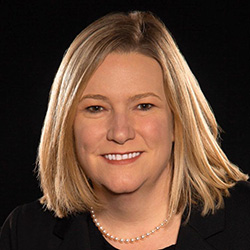 “How lucky Dayton was that Father O’Reilly changed the name from St. Mary’s to University of Dayton. The name represents the city at every game UD plays, every technology created, and every graduate that takes root in the country and the world. We are so connected, and the city is lucky for it.”
“How lucky Dayton was that Father O’Reilly changed the name from St. Mary’s to University of Dayton. The name represents the city at every game UD plays, every technology created, and every graduate that takes root in the country and the world. We are so connected, and the city is lucky for it.”
—Nan Whaley ’98, mayor, city of Dayton
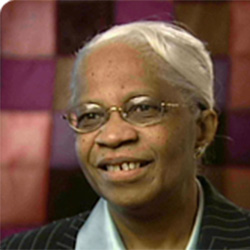 “Changing the name from St. Mary’s to the University of Dayton was a positive contribution. University implies oneness and a welcoming environment. Dayton, the home of Paul Laurence Dunbar and the Wright brothers, reminds us of our ability to also make significant contributions.”
“Changing the name from St. Mary’s to the University of Dayton was a positive contribution. University implies oneness and a welcoming environment. Dayton, the home of Paul Laurence Dunbar and the Wright brothers, reminds us of our ability to also make significant contributions.”
—Margaret Peters ’59, author, teacher, mentor
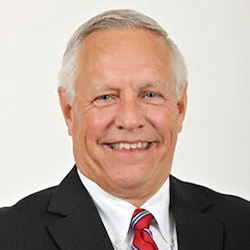 “As the University has become more national in its reputation, we are often thought of as a public university like Toledo, Cincinnati and Akron. When this happens, we have a wonderful opportunity to share our story about the Marianists, our Catholic identity and our close ties to our Dayton community. It is almost always seen by prospective students and their parents as a benefit.”
“As the University has become more national in its reputation, we are often thought of as a public university like Toledo, Cincinnati and Akron. When this happens, we have a wonderful opportunity to share our story about the Marianists, our Catholic identity and our close ties to our Dayton community. It is almost always seen by prospective students and their parents as a benefit.”
—Rob Durkle ’78, former dean of admission
 “In Jesus Christ, God became human, ‘pitched his tent’ in our midst, became one of us, both our Lord and brother. Our solidarity and commitment in the city flows from this. And though the University is no longer called St. Mary’s, it still belongs to her and is animated by her son. Perhaps we can consider it ‘Mary’s University of Dayton.’”
“In Jesus Christ, God became human, ‘pitched his tent’ in our midst, became one of us, both our Lord and brother. Our solidarity and commitment in the city flows from this. And though the University is no longer called St. Mary’s, it still belongs to her and is animated by her son. Perhaps we can consider it ‘Mary’s University of Dayton.’”
—Brother Brandon Paluch, S.M. ’06, Marianist seminarian
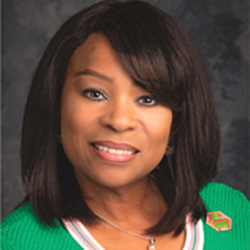 “The University is a beacon for the region. It is a leader in academia; leader in helping to drive economic development; leader in community engagement; leader in living its vision and value. At its core the University of Dayton is branded and lives its Marianist connection and its commitment to servant leadership.”
“The University is a beacon for the region. It is a leader in academia; leader in helping to drive economic development; leader in community engagement; leader in living its vision and value. At its core the University of Dayton is branded and lives its Marianist connection and its commitment to servant leadership.”
—Sharon Howard ’78, director of site communications, Premier Health
 “Each one can count on the other for support, encouragement and advancement on diverse social, economic, political and religious levels. Together we look to the future. Collaborative dreaming, daring and doing makes a difference for the city.”
“Each one can count on the other for support, encouragement and advancement on diverse social, economic, political and religious levels. Together we look to the future. Collaborative dreaming, daring and doing makes a difference for the city.”
—Sister Angela Ann Zukowski, M.H.S.H. ’73, professor of religious studies and director of the Institute for Pastoral Initiatives
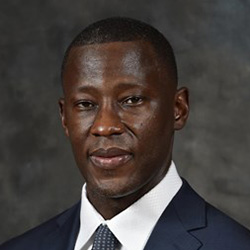 “Basketball and the University of Dayton are woven into the fabric of the Dayton community. It’s a love affair. Fans bring their families to games, and no matter where they go to college, when they come home, they want to see the Flyers.”
“Basketball and the University of Dayton are woven into the fabric of the Dayton community. It’s a love affair. Fans bring their families to games, and no matter where they go to college, when they come home, they want to see the Flyers.”
—Anthony Grant ’87, Flyer men’s basketball head coach
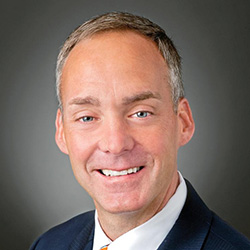 “UD has transformed its part of Dayton into a vibrant innovation district. And the connection goes beyond the name. I am reminded daily of the servant-leadership component of UD and our community.”
“UD has transformed its part of Dayton into a vibrant innovation district. And the connection goes beyond the name. I am reminded daily of the servant-leadership component of UD and our community.”
—Jeff Hoagland ’91, president and CEO, Dayton Development Coalition
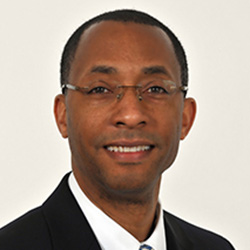 “The University of Dayton and the city of Dayton have a synergetic relationship, positively affecting the region and the world. As an employer, UD brings in people from around the region daily to work in and contribute to the Dayton economy.”
“The University of Dayton and the city of Dayton have a synergetic relationship, positively affecting the region and the world. As an employer, UD brings in people from around the region daily to work in and contribute to the Dayton economy.”
—Troy Washington, University vice president for human resources
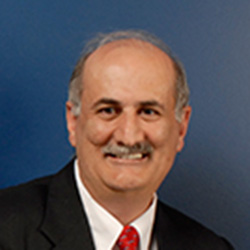 “Father O’Reilly’s decision was astute and farsighted. By changing the name to the University of Dayton, Father O’Reilly opened a door to the future, to a world of constantly unfolding potential he could hardly have imagined.”
“Father O’Reilly’s decision was astute and farsighted. By changing the name to the University of Dayton, Father O’Reilly opened a door to the future, to a world of constantly unfolding potential he could hardly have imagined.”
—Joseph Saliba ’79, professor and former provost
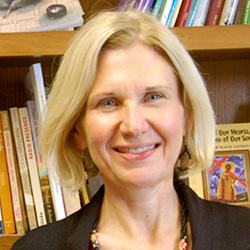 “The name ‘University of Dayton’ sent the signal to the wider Dayton community that this institution was for all Daytonians, not only those who were Catholic. I think that UD has lived into that name change in a variety of ways — welcoming people of all faiths, accepting women when Catholic coeducation was rare, and inviting all to share in the Marianist and Catholic educational mission. Today it is manifest in the mutual commitments between the University and the city to make both communities thrive as places of education and innovation, seeking to make both the University and Dayton places of opportunity and welcome for a diversity of people.”
“The name ‘University of Dayton’ sent the signal to the wider Dayton community that this institution was for all Daytonians, not only those who were Catholic. I think that UD has lived into that name change in a variety of ways — welcoming people of all faiths, accepting women when Catholic coeducation was rare, and inviting all to share in the Marianist and Catholic educational mission. Today it is manifest in the mutual commitments between the University and the city to make both communities thrive as places of education and innovation, seeking to make both the University and Dayton places of opportunity and welcome for a diversity of people.”
—Sandra Yocum, University Professor of Faith and Culture